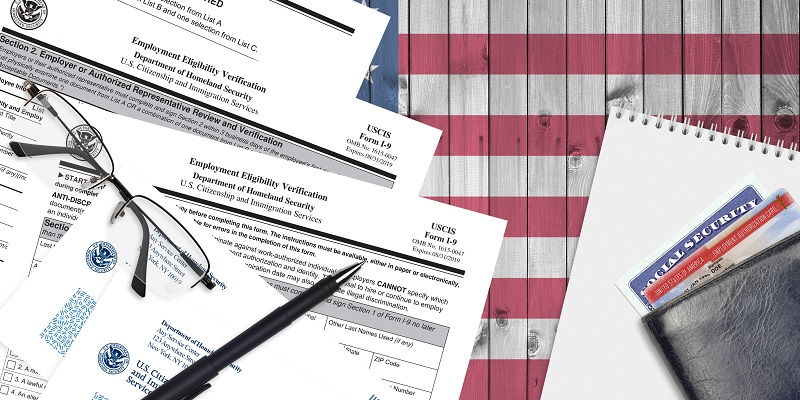In order to enhance efficiency and simplify the employment eligibility verification process, the Department of Homeland Security (DHS) announced significant changes to the Form I-9 on August 1, 2023. These changes, which will go into effect on November 1, aim to streamline the form, making it more manageable for employers while ensuring compliance with immigration laws. Failure to utilize the new Form I-9 may result in penalties under Section 274A of the Immigration and Nationality Act (INA).
Streamlined Form I-9
The primary modification to the Form I-9 is the consolidation of the previous two-page form into a single page. This streamlining process combines Section 1 and Section 2, reducing the administrative burden on employers and saving valuable time during the verification process. Additionally, the preparer and/or translator portion has been segregated into a standalone document known as ‘Supplement A,’ allowing for a clearer division of responsibilities. Moreover, Section 3 has been moved to a separate document called ‘Supplement B,’ simplifying the updating process for reverifications.
Alternative Procedure for Work Authorization Document Inspection
One of the most significant changes introduced by DHS is the creation of an alternative procedure designed to facilitate the inspection of employees’ work authorization documents for employers. This alternative procedure allows employers, in good standing with the E-Verify program, to remotely examine necessary documentation, starting from August 1, 2023. This development is expected to be particularly beneficial for employers with remote hires.
To make use of this alternative procedure, a qualified employer must carefully examine copies of the required Form I-9 documents or acceptable receipts. Additionally, a live video interaction between the employer and the employee is essential to ensure the authenticity and accuracy of the submitted documents. It is important for the employer to clearly indicate on the Form I-9 that the alternative procedure was utilized and to retain clear copies of all pertinent documentation.
Consistency and Application of the Alternative Procedure
To maintain compliance, qualified employers must consistently apply the alternative procedure for all employees at a specific site. This requirement ensures fairness and protects against potential discrimination. It is of utmost importance for employers to uniformly implement the alternative procedure to avoid any potential legal ramifications.
Moreover, qualified employers have the flexibility to offer the alternative procedure solely for remote hires, while still retaining the ability to conduct physical inspections for employees who are on-site. This option provides employers with the necessary adaptability to address the unique circumstances of their workforce.
The revamped and streamlined Form I-9, along with the introduction of the alternative procedure, marks a significant development in the employment eligibility verification process. The consolidation and segregation of sections, along with the remote inspection option, aim to simplify and expedite the process for employers. It is crucial for employers to promptly adapt to these changes to ensure compliance with immigration laws. Failure to comply may lead to penalties under Section 274A of the INA. Employers must be diligent in implementing the new procedures to avoid potential legal and financial implications while promoting a fair and efficient employment verification process.

